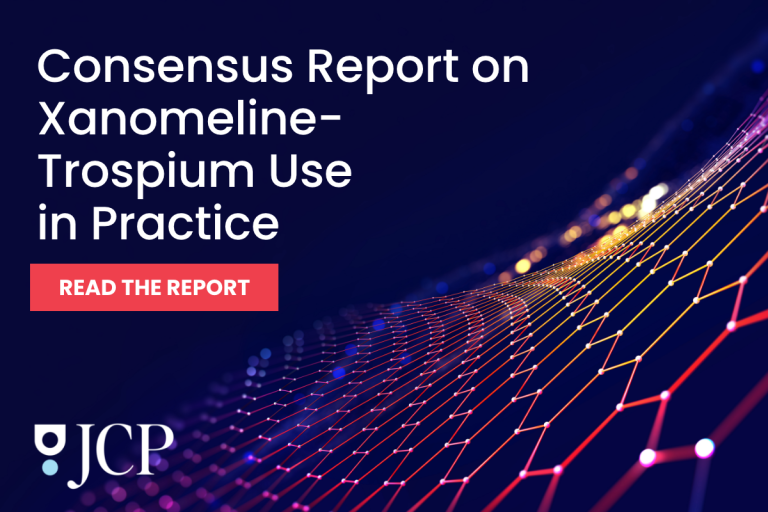Psych Congress 2025 | San Diego, CA
Background and Rationale
All currently approved antipsychotic medications for schizophrenia act through dopamine D₂ receptor antagonism or partial agonism. While effective for many patients, unresolved positive and/or negative symptoms occur in many patients and these agents can be associated with intolerable side effects including, extrapyramidal symptoms, emotional blunting, and significant metabolic side effects. Xanomeline–trospium (X/T), the first muscarinic receptor agonist combination approved by the U.S. Food and Drug Administration for schizophrenia, represents a distinct, non-D₂ mechanism. Xanomeline preferentially stimulates central M₁ and M₄ muscarinic receptors, while trospium, a peripherally restricted muscarinic antagonist, limits procholinergic effects outside the central nervous system. As clinicians begin integrating X/T into practice, understanding how patients are transitioned from dopamine-based antipsychotics is critical.
Study Design
This retrospective analysis gathered real-world data from psychiatric healthcare providers (HCPs) across the United States with experience prescribing X/T. Deidentified chart data were collected from adults (≥18 years) with a confirmed DSM-5 diagnosis of schizophrenia who had received therapeutic X/T dosing for at least 1 month following a switch from a prior antipsychotic. Ninety unique patient records were included, most contributed by psychiatric/mental-health nurse practitioners in outpatient settings.
Patient and Provider Characteristics
The mean patient age was 39 years, and nearly 60% were male. Half had been diagnosed within the past 10 years, and 42% for more than 10 years. The most frequent prior treatments were olanzapine (24%) and risperidone (19%). Inadequate control of positive or negative symptoms (each 47%) and metabolic issues (34%) were the leading reasons for discontinuing previous antipsychotics. HCPs cited X/T’s novel mechanism (74%) and potential cognitive, mood, and metabolic benefits as key factors guiding its selection.
Transition Approaches
A cross-titration strategy was most common (54%), generally lasting 2 to 4 weeks. Among clinicians who tapered the previous antipsychotic, reduction steps of 25–50% were typical. When switching from agents with notable anticholinergic activity (e.g., “-pine” compounds), prescribers often adjusted the taper to minimize additive effects. Most clinicians advanced X/T doses more conservatively than in clinical trials: about 60% remained on 50 mg/20 mg BID for 3–14 days, and fewer than 20% were titrated to the maximum 125 mg/30 mg dose.
Tolerability and Adverse-Event Management
Nausea (64%) and vomiting (37%) were the most frequently reported adverse events. Roughly half of affected patients received pharmacologic intervention, most often ondansetron or supplemental trospium, with partial or complete relief in the majority of subjects. Dose reductions or slower uptitration strategies were also employed. Notably, even with extended titration schedules, gastrointestinal effects remained common but manageable.
Conclusions
In routine outpatient practice, X/T is being introduced to a diverse population of adults with schizophrenia, frequently those switching from second-generation antipsychotics due to insufficient efficacy or intolerable side effects. Clinicians are favoring gradual cross-titration over abrupt switches, reflecting caution in integrating this first-in-class muscarinic therapy. Real-world experience underscores that while gastrointestinal side effects are common, they can be effectively mitigated with oral ondansetron or trospium, supporting continued exploration of individualized transition strategies as X/T adoption grows.
